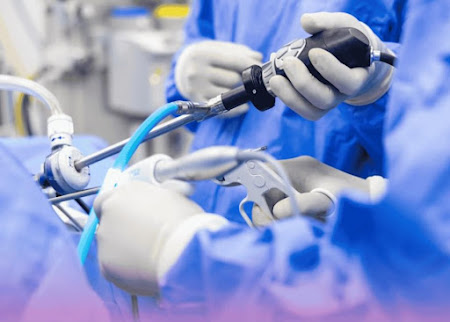Why Minimally Invasive Surgery Matters in Cancer Cares

Cancer treatment has evolved significantly over the years, with surgery remaining one of the most effective options for many types of cancers. Traditionally, cancer surgeries involved large incisions and long recovery times. But thanks to minimally invasive techniques such as laparoscopic and robotic surgery, patients today have safer, faster, and more precise treatment options.
What Is Minimally Invasive Surgery?
Minimally invasive surgery uses small incisions, specialized instruments, and high-definition cameras (laparoscopy) or robotic arms (robotic-assisted surgery) to perform complex procedures. Unlike open surgery, which requires a large cut, minimally invasive surgery causes less trauma to the body.
Key Benefits for Cancer Patients
1. Smaller Incisions, Less Pain
Tiny incisions mean less damage to surrounding tissues, resulting in reduced pain after surgery.
2. Faster Recovery
Patients can get back to normal life sooner with shorter hospital stays and quicker return to daily activities.
3. Reduced Blood Loss & Scarring
Less bleeding during surgery not only improves safety but also leads to minimal scarring.
4. Lower Risk of Infection
Since the wounds are smaller, the chances of infection are significantly reduced.
5. Precision in Cancer Removal
Robotic surgery provides surgeons with a magnified 3D view and enhanced dexterity, allowing precise removal of cancerous tissue while protecting vital structures.
When Is Minimally Invasive Surgery Used in Cancer?
This approach is widely used for several types of cancers, including:
- Colorectal cancer
- Prostate cancer
- Kidney and bladder cancers
- Gynecologic cancers
- Stomach and esophageal cancers
The Role of Robotic Surgery
Robotic-assisted surgery is the latest advancement in minimally invasive cancer care. It allows surgeons to perform complex procedures with greater accuracy, improving both survival outcomes and quality of life after surgery.
Minimally invasive surgery has transformed cancer care, offering patients hope for effective treatment with fewer complications. By reducing pain, speeding up recovery, and improving precision, these techniques ensure that patients not only survive but also thrive after surgery.
If you or a loved one has been advised cancer surgery, ask your surgical oncologist whether a minimally invasive or robotic approach is suitable for your case.
